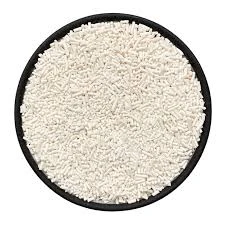
formic acid hcooh
Understanding Formic Acid (HCOOH) Properties, Uses, and Production
Formic acid, a simple carboxylic acid with the chemical formula HCOOH, is an organic compound that plays a significant role in various industrial and natural processes. With a pungent odor and colorless appearance, it is the simplest form of carboxylic acid and is found in nature, particularly in the venom of ants, which give this acid its name. This article will explore its properties, uses, and production methods, highlighting its importance in both science and industry.
Properties of Formic Acid
Formic acid is a highly reactive, colorless liquid with a distinctive, sharp smell. It has a molecular weight of 46.03 g/mol and a boiling point of 100.8°C. Due to its structure, it exhibits both acidic and reducing properties. The acid dissociation constant (pKa) of formic acid is around 3.75, which makes it a relatively strong acid among carboxylic acids. Additionally, it is hygroscopic, meaning it can absorb moisture from the environment, and it is highly soluble in water, alcohols, and many organic solvents.
Natural Occurrence and Historical Significance
Formic acid is found naturally in many plants and is notably produced by certain insects, especially ants, as a defense mechanism. When ants feel threatened, they release formic acid from their abdomen, creating an acrid barrier to deter predators. The name formic is derived from the Latin word formica, meaning ant. Historically, formic acid was first isolated in the 17th century by the English chemist John Ray and was used as an early preservative and antiseptic.
Industrial Applications
formic acid hcooh

Formic acid has a broad range of industrial applications. It is primarily used in the production of leather, where it plays a crucial role in tanning processes. The textile industry also benefits from formic acid as it is used in dyeing and finishing. In agriculture, it serves as a preservative for silage and as a feed additive, enhancing digestibility and overall health in livestock.
Furthermore, formic acid is employed in the production of various chemicals, including methanol, acetic acid, and formate salts, which have their respective applications in pharmaceuticals, food preservation, and even as a fuel source in fuel cells. The energy density of formic acid makes it a candidate for future energy storage solutions.
Production of Formic Acid
Formic acid can be produced through various methods, both natural and synthetic. The most common industrial method involves the reaction of carbon monoxide with sodium hydroxide followed by acidification, yielding concentrated formic acid. Another method includes the oxidation of methyl alcohol, allowing for more efficient and sustainable production techniques.
In recent years, researchers have focused on developing greener production methods, such as bio-based production using renewable biomass, which could significantly reduce the environmental impact associated with traditional manufacturing processes.
Conclusion
Formic acid (HCOOH) is a crucial compound with myriad applications in various industries, from agriculture to pharmaceuticals. Its natural origins, combined with its versatile uses and potential for sustainable production, underscore its importance in modern society. Understanding and utilizing formic acid effectively can lead to advancements in environmental management and industrial processes, making it a compound of interest for both researchers and manufacturers alike.
-
Pure Sodium Dichloroisocyanurate Dihydrate | Powerful DisinfectantNewsAug.29,2025
-
Industrial Chemicals: Quality & Purity for Every IndustryNewsAug.28,2025
-
Nitrile Rubber Honoring Strict Production StandardsNewsAug.22,2025
-
Aspartame Ingredients Honoring Food Safety ValuesNewsAug.22,2025
-
Fertilizer for Balanced Plant NutritionNewsAug.22,2025
-
Cyanide Gold Processing with High Purity AdditivesNewsAug.22,2025
-
Formic Acid in Textile Dyeing ApplicationsNewsAug.22,2025
Hebei Tenger Chemical Technology Co., Ltd. focuses on the chemical industry and is committed to the export service of chemical raw materials.
-

view more DiethanolisopropanolamineIn the ever-growing field of chemical solutions, diethanolisopropanolamine (DEIPA) stands out as a versatile and important compound. Due to its unique chemical structure and properties, DEIPA is of interest to various industries including construction, personal care, and agriculture. -

view more TriisopropanolamineTriisopropanolamine (TIPA) alkanol amine substance, is a kind of alcohol amine compound with amino and alcohol hydroxyl, and because of its molecules contains both amino and hydroxyl. -

view more Tetramethyl Thiuram DisulfideTetramethyl thiuram disulfide, also known as TMTD, is a white to light-yellow powder with a distinct sulfur-like odor. It is soluble in organic solvents such as benzene, acetone, and ethyl acetate, making it highly versatile for use in different formulations. TMTD is known for its excellent vulcanization acceleration properties, which makes it a key ingredient in the production of rubber products. Additionally, it acts as an effective fungicide and bactericide, making it valuable in agricultural applications. Its high purity and stability ensure consistent performance, making it a preferred choice for manufacturers across various industries.





